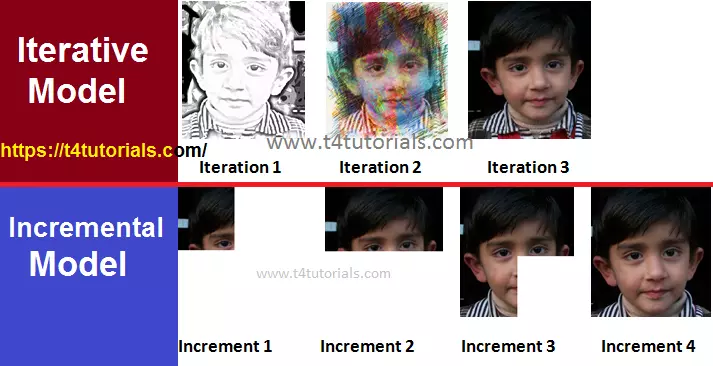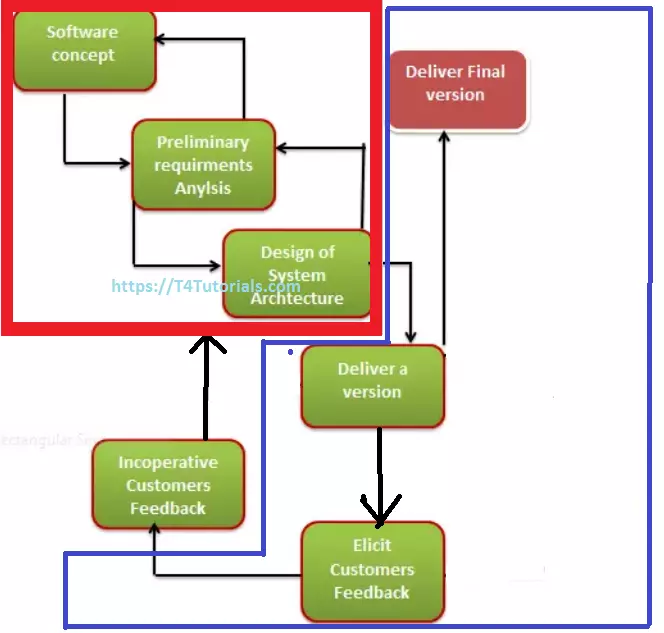The evolutionary model is the model of software engineering. In the evolutionary model, all the work is done during the development phase. In this model, all work divided into small chunks or modules. For example, the Waterfall model in which all the users are able to get access to the product at the end of each cycle. This model is a combination of incremental and iterative models.
It is a very suitable model because of user feedback and other factors that make the model very suitable for the development of complete Software. The user feedback is very helpful for the development of the next stage because after the completion of one stage we get the feedback to the user, the user feedback is very essential for the development of the next phase.
If you want any changes in the software requirements, all changes will be applied within a time.
In the evolutionary model, all work divided into smaller chunks. These chunks present to the customer one by one. The confidence of the customer increased. This model also allows for changing requirements as well as all development done into different pieces and maintains all the work as a chunk.
Where the evolutionary model is useful
Evolutionary model is useful in many cases. Two most important cases are mentioned below;
- It is very useful in a large project where you can easily find a module for step by step implementation. The evolutionary model is used when the users need to start using the many features instead of waiting for the complete software.
- The evolutionary model is also very useful in object-oriented software development because all the development is divided into different units.
The following are the evolutionary models.
- The prototyping model
- the spiral model
- the concurrent development model
Advantages of Evolutionary Model
There are many advantages of evolutionary model, Some main advantages are mentioned below;
- The big advantage of the evolutionary model is that the user has checked every stage during the development and it is helpful in achieving customer confidence.
- There are fewer chances of errors because all the modules are well seen.
- It helps to reduce the risk of software projects.
- It also reduces the cost of development.
- Minimize serious problems during testing.
Disadvantages of Evolutionary Model
There are many dis-advantages of evolutionary model, Some main advantages are mentioned below;
- The delivery of full software can be late due to different changes by customers during development.
- It is difficult to divide the problem into several parts, that would be acceptable to the customer which can be incrementally implemented and delivered.
Comparison of Iterative and Incremental Model
Let’s see the Comparison of Iterative and Incremental Model with a little diagram that can save your time to read the text in detail.

In this example, we can see that in iterative model, picture is finalized after third iteration. and in incremental model, the picture is finalized after fourth increment.
Video Lecture
advantages and disadvantages of the evolutionary model in software engineering | evolutionary model ppt | evolutionary model pdf | advantages and disadvantages of the evolutionary model in software engineering | evolutionary process model in software engineering | concurrent model in software engineering | concurrent development model diagram.

